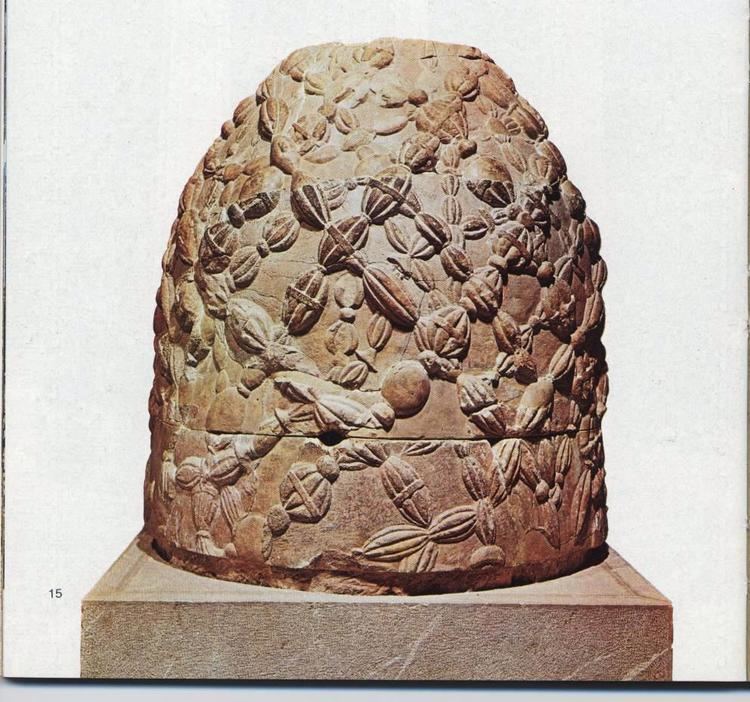 | ||
An omphalos (ὀμφαλός) is a religious stone artifact, or baetylus. In Greek, the word omphalos means "navel". In Greek lore, Zeus sent two eagles across the world to meet at its center, the "navel" of the world. Omphalos stones marking the centre were erected in several places about the Mediterranean Sea; the most famous of those was at Delphi. Omphalos is also the name of the stone given to Cronus. In the ancient world of the Mediterranean, it was a powerful religious symbol. Omphalos Syndrome refers to the belief that a place of geopolitical power and currency is the most important place in the world.
Contents
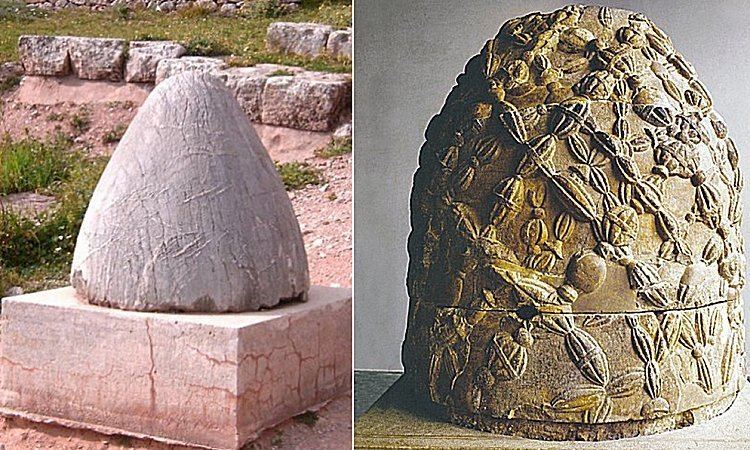
Symbolism
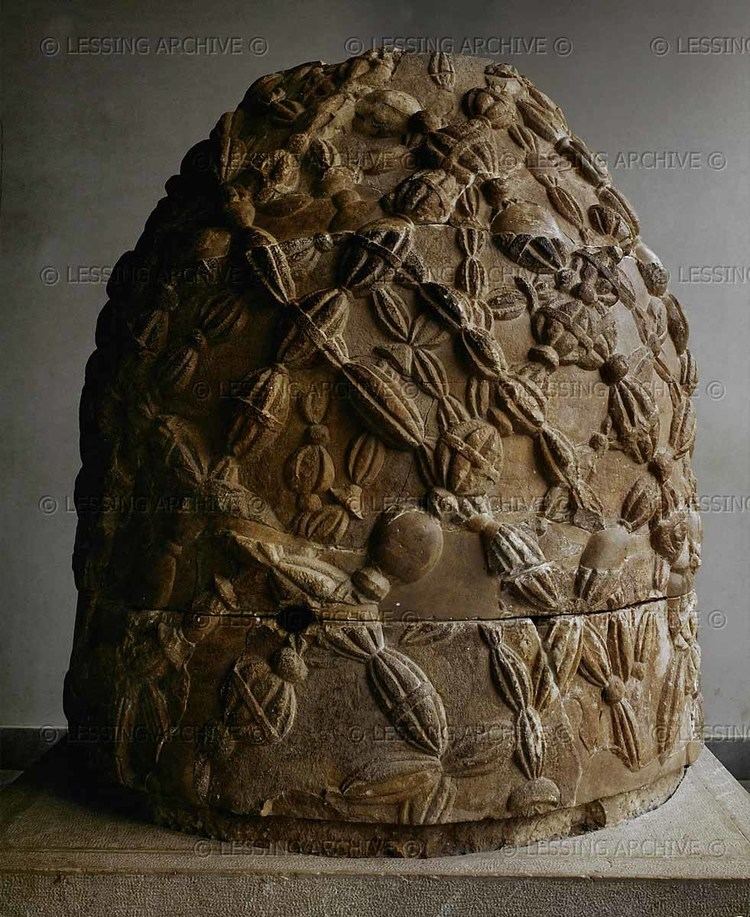
The omphalos was not only an object of Hellenic religious symbolism and world centrality; it was also considered an object of power. Its symbolic references included the uterus, the phallus, and a cup of red wine representing royal blood lines.
Delphi
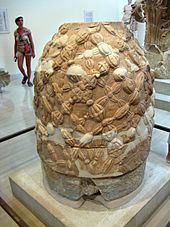
Most accounts locate the Delphi omphalos in the adyton (sacred part of the temple) near the Pythia (oracle). The stone sculpture itself (which may be a copy), has a carving of a knotted net covering its surface, and a hollow center, widening towards the base. The omphalos represents the stone which Rhea wrapped in swaddling clothes, pretending it was Zeus, in order to deceive Cronus. (Cronus was the father who swallowed his children so as to prevent them from usurping him as he had deposed his own father, Uranus).
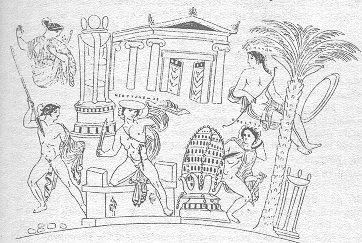
Omphalos stones were believed to allow direct communication with the gods. Holland (1933) suggested that the stone was hollow to allow intoxicating vapours breathed by the Oracle to channel through it. Erwin Rohde wrote that the Python at Delphi was an earth spirit, who was conquered by Apollo and buried under the Omphalos. However, understanding of the use of the omphalos is uncertain due to destruction of the site by Theodosius I and Arcadius in the 4th century CE.
Jerusalem
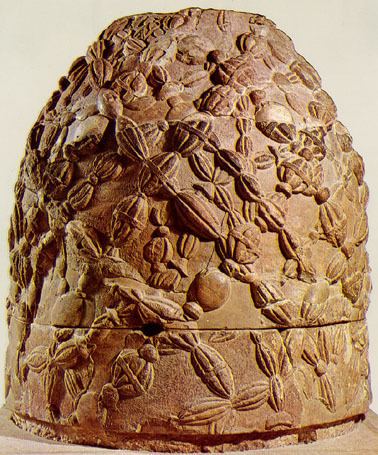
The omphalos at the Church of the Holy Sepulchre, Jerusalem, represents, in Christian mediaeval tradition, the navel of the world (the spiritual and cosmological centre of the world). Jewish tradition held that God revealed himself to His people through the Ark of the Covenant in the Temple in Jerusalem, which rested on the Foundation stone marking the centre of the world. This tradition may have stemmed from the similar one at Delphi. The omphalos has a collection box chained next to it. (See picture)
Art
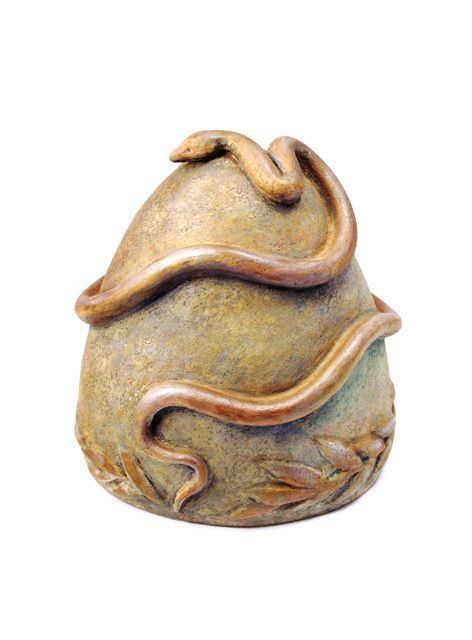
Omphalos is a public art sculpture by Dimitri Hadzi formerly located in the Harvard Square, Cambridge, Massachusetts under the Arts on the Line program. As of 2014, the sculpture has been deinstalled; it will be relocated to Rockport, Massachusetts.
Literature
In literature, the word, omphalos has held various meanings but usually refers to the stone at Delphi. Authors who have used the term include: Homer, Pausanias, D.H. Lawrence, James Joyce, and Jacques Derrida. For example, Joyce uses the term in the novel, Ulysses,
""Billy Pitt had them built," Buck Mulligan said, "when the French were on the sea but our's is the omphalos."" (chapter 1),"...to set up there a national fertilising farm to be named Omphalos with an obelisk hewn and erected after the fashion of Egypt and to offer his dutiful yeoman services for the fecundation of any female of what grade of life soever who should there direct to him with the desire of fulfilling the functions of her natural." (chapter 14),"One of her sisterhood lugged me squealing into life. Creation from nothing. What has she in the bag? A misbirth with a trailing navelcord, hushed in ruddy wool. The cords of all link back, strandentwining cable of all flesh. That is why mystic monks. Will you be as gods? Gaze in your omphalos." (chapter 3)Other examples include,
